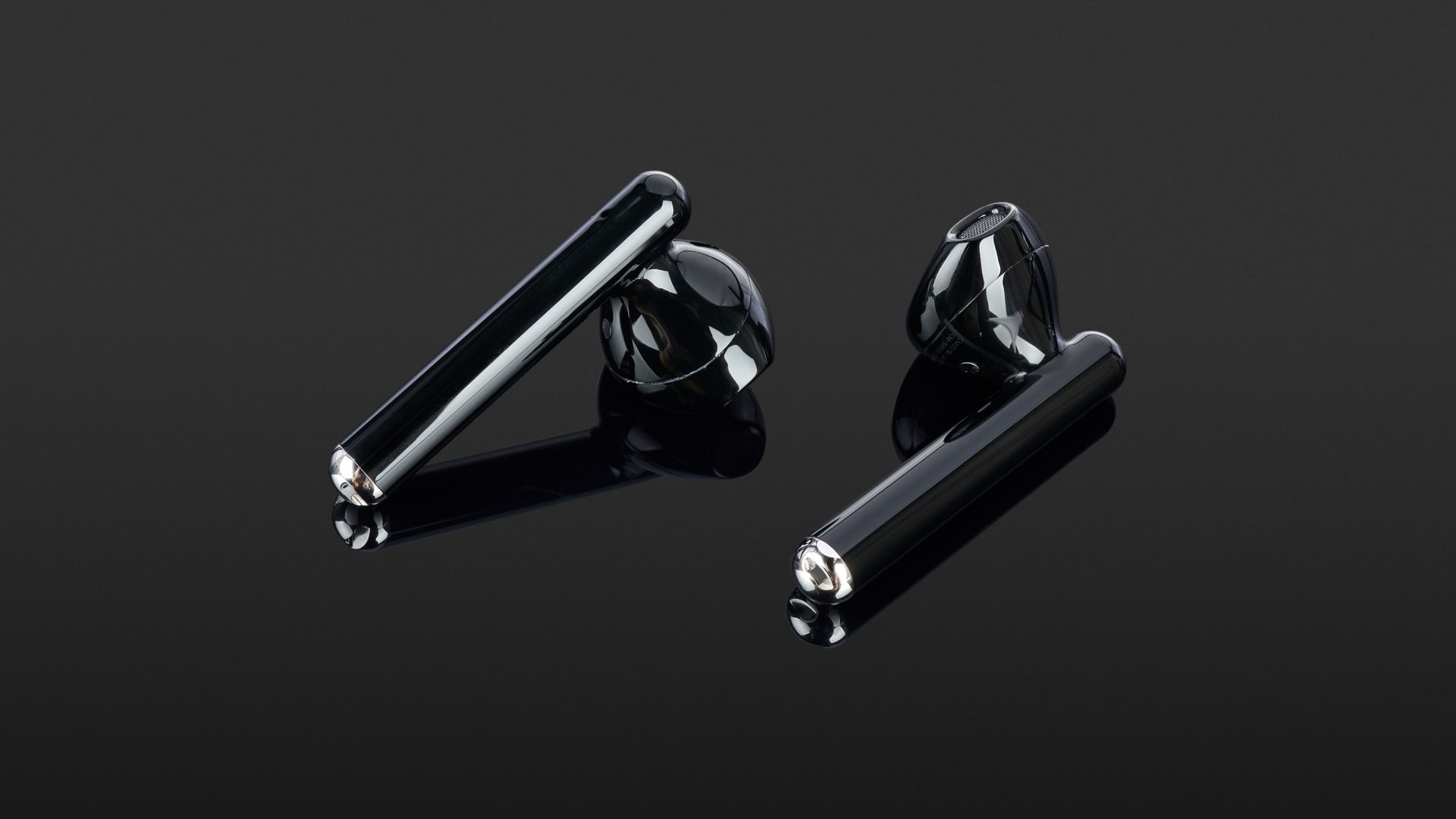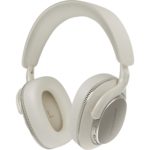The Huawei FreeBuds 3 left us with mixed feelings about battery life, sound quality and noise reduction. Phone calls and lip-synced movies are really good with the FreeBuds 3, but the fact that there are only two control commands directly on the ear and that the active noise reduction is less effective than it could be – combined with noise – means that the FreeBuds 3 are not the leader in the True-Wireless category, but rather, somewhere in the middle of the field. They do however stand out due to their good workmanship, the pleasant feel and other qualities such as picture/sound synchronicity and the suppression of wind noise.
At the moment it seems that every smartphone manufacturer is offering matching headphones for their phones. This assumes that you will want your gadgets to be made by the development department of the same company that made your phone. Apple have been doing this impressively for years, their AirPods and the new AirPods Pro are now the top-selling accessories from the Californian corporation.
Huawei wants to go the same way. They are now the second-largest smartphone manufacturer in the world and along with their FreeBuds Lite, they are now launching FreeBuds 3.
And yes, the FreeBuds 3 look very similar to AirPods, like so many others headphones that want to jump on the True Wireless bandwagon. But while AirPods are only available in white, without noise cancelling, Huawei not only offer two different colours for the same price, but also have an active noise-cancelling feature. So, have Huawei fans finally found an adequate alternative to Apple’s ubiquitous white earpieces?
What can the Kirin A1 do?
Inside the completely wireless FreeBuds 3 is a processor called “Kirin A1”, which is supposed to be very effective in Huawei’s wearable accessories. With the support of the new Bluetooth version 5.1, this chip offers, among other things, a modern and stable, energy-saving Bluetooth connection with low latency. The classic master-slave control of these in-ears is used in favour of individual data supply individually to both in-ears. In addition, the new chip is capable of data transmission of up to 2.3 megabits per second, so that even FLAC files without encoding can be played back via Bluetooth UHD.
Coupling and configuration
When used with a Huawei Phone, the FreeBuds 3 connect as elegantly and fast as Apple earbuds do with an iPhone. When you open the lid of the charging case, a small window pops up on the phone, which shows when the connection is completed. It also displays the battery status of the headphones and of the charging case. However, this only works with Huawei smartphones that have at least EMUI 10 installed. This also applies to the Auto-Play function, which starts playback when you put the headphones in your ears and automatically pauses when the FreeBuds 3 are taken out again.
If the free Android app “Huawei AI Life” is installed, these in-ears can be assigned functions according to your own preference. Under the item “Shortcut” you can assign the functions you would like to control remotely, and these are then activated by tapping the right or left headphone twice. They include: “Skip Forward”, “Play/Pause”, “Assistant”, “ANC” and “No Action”. This means only two actions can be controlled directly on the headphones. The active noise reduction can also be adjusted, but more about this later.
Listen up
Because their design is completely without ear moulds – true to the motto “One Size Fits All” – the FreeBuds 3 hung rather loosely in my ears. Yet I was surprised how well they fit me, not pressing at all or causing even the slightest discomfort. Nevertheless, a thoughtless head movement could easily lead to the loss of a piece of expensive technology.
The sound that reaches your ears through the dynamic 14mm drivers is extremely smooth, pleasantly open and appearing to sound balanced, velvety and clear, while the basses add some zest and the trebles come across as lively and fresh. In my opinion, only the mids don’t really hold their own, and this makes the overall sound seem a bit thin.
The Huawei FreeBuds 3, therefore, do not climb to the top of the list in terms of sound. The promise of good picture and sound synchronicity when watching videos is a plus point, but it’s not really much to ask for the words not to lag behind the pictures.
Noise cancelling
If you switch on the noise reduction, the noise level rises significantly; this comes from the microphones, which have to record the ambient noise before they can filter it. In the app, you can adjust the strength of the noise reduction using a turntable so that certain frequencies more or less disappear. In this way you can hear the announcements at the station without hearing the disturbing rumbling of the trains. But you have to work a little bit to get a good result. All in all, active noise cancelling contributes to the quietness of music listening, but in the end, due to the loose design of the earbuds – which only hang in the ear and do not have benefit from any fitting attachments to help dampen sound – it’s difficult to create much isolation from the outside world and disturbing noises can still get into your ears.
Special Features
The Kirin chip can, however, do much more: When telephoning, it eliminates background noises, transmits the voice particularly well through an auditory bone sensor and suppresses wind noise (up to approx. 20 km/h) when cycling. During our test calls, the other party also attested to very good speech intelligibility, almost as if we weren’t talking over the headphones at all. On a bike, while the wind is blowing around the ears, the caller’s only feedback was that the voice tended to become a bit more prominent in the course of noise suppression. However, the other caller didn’t hear the wind rustling, so that was a positive result.
Charging case and running time
The pocket-friendly, round charging case can be topped up with power either via USB-C cable or a charging mat. “Reverse Charging”, that is wireless charging via mobile phone, is also supported, provided that the smartphone is compatible.
The FreeBuds run for about 3.5 hours outside of their charging station, which is a rather low average. The manufacturer says four hours of running time and four recharges in the case, so theoretically you get 20 hours of running time, which should be enough for a day trip.
Technical specifications
- Ear couplingEar Buds
- Typeclosed
- Transducer principledynamic
- Weight without cable2x 4,5 g
What's in the box
- USB-C charging cable
- Charging case
Special features
- available in black and white
- BT version: 5.1
- BT codecs: SBC, AAC, BT UHD

















































